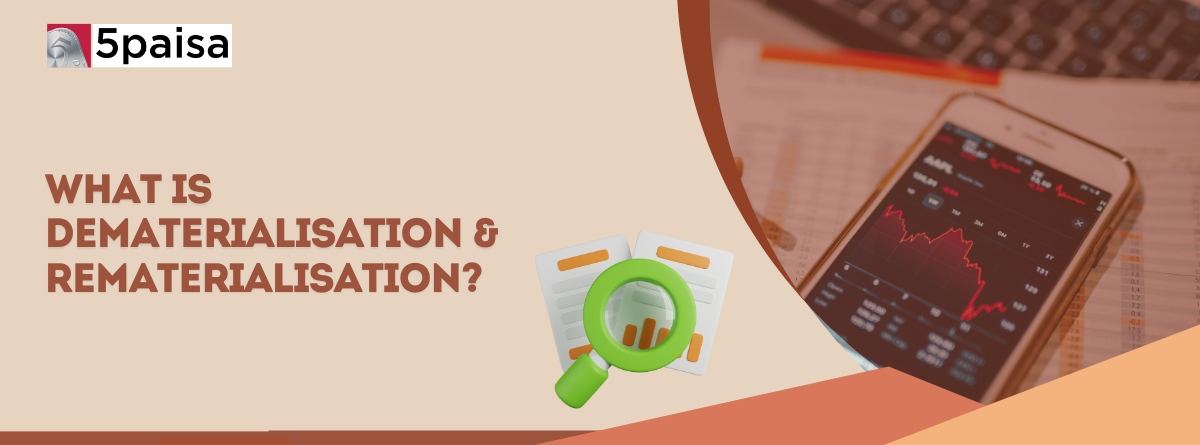Content
- What is Dematerialisation?
- The Process of Dematerialisation
- Steps of Dematerialisation
- Steps of Rematerialization
- Difference Between Dematerialization and Rematerialization
- Things to Note Before Dematerialisation and Rematerialisation
- Conclusion
What is Dematerialisation?
The Indian stock market has come a long way since its beginnings in 1875 with the "Native Share and Stock Broker's Association," now the Bombay Stock Exchange (BSE). Over the years, technological advancements have transformed how shares are traded.
Earlier, investors had to keep physical share certificates safe from damage or loss, as losing them could lead to financial setbacks. This changed with the Depositories Act, 1996, which required all public companies to issue dematerialized shares.
In this article, we’ll explore dematerialization and rematerialization, their processes, and the differences that every investor should know.
More Articles to Explore
- Difference between NSDL and CDSL
- Lowest brokerage charges in India for online trading
- How to find your demat account number using PAN card
- What are bonus shares and how do they work?
- How to transfer shares from one demat account to another?
- What is BO ID?
- Open demat account without a PAN card - a complete guide
- What are DP charges?
- What is DP ID in a demat account
- How to transfer money from demat account to bank account
Disclaimer: Investment in securities market are subject to market risks, read all the related documents carefully before investing. For detailed disclaimer please Click here.
Frequently Asked Questions
Dematerialisation is the process of converting physical share certificates into electronic form, making trading and storage easier and more secure.
An investor may opt for rematerialisation to receive physical share certificates, often to avoid Demat account maintenance charges or for personal preferences.
No, during rematerialisation, your account is temporarily blocked, so you cannot trade shares until the process is complete.
Rematerialised shares are more vulnerable to risks such as theft or damage compared to dematerialised shares, which are stored electronically for enhanced security.




